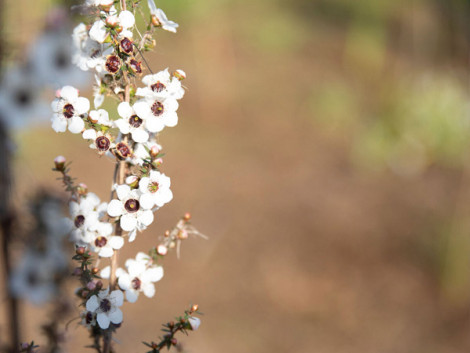Te huataki i tō kaupapa whakahaumanu rākau taketake Starting your native tree restoration project
If you’re planning a native tree restoration project, it can be hard to know where to start. Here are some tasks that will help you create a plan for restoring the native tree canopy to your whenua.
On this page
Governance
When you start your project, think about if you need to set up a governance structure. Governance helps provide the strategy and plans that guide the mahi on the whenua.
Gather knowledge
Start by getting as much information as you can about your whenua. Make the most of other people’s experience and ask for advice.
Get a free report about your whenua Māori on the Tupu website. The report will:
- show you where your whenua is
- show you aerial photos of the whenua
- tell you about the environment, economy, and climate in the rohe where the whenua is
- tell you information about the soil, water, slope, and vegetation on the whenua.
If you’ve got the information you need about your whenua back, you should then think about:
- the restoration priorities for the whenua
- how you’ll action these activities.
Read about ngahere restoration principles, planning and goal setting on our Forest restoration planting page.
Invest time in investigating the needs of the whenua. Restoration knowledge can be specific. You’ll need to make decisions about what to do first and what to spend money on.
To plant trees on your whenua, you need to find out:
- what trees are best for your whenua
- how to get money to fund your project
- how to plan for and plant ngahere.
There are lots of organisations to get advice from. You could also talk with other iwi groups working on similar projects.

Understand the threats
Before you start your ngahere project, find out what could ‘threaten’ your whenua. You need to identify and deal with threats before investing in native ngahere restoration. Knowing what could affect your whenua will help you care for it. It’ll save you money too.
Threats might include weeds like old man’s beard or browsing animals like goats.
Understanding the biggest threats will help you prioritise your time and resources.
You may need to spend money on certain issues, for example weed control or pest eradication, before they get bigger. Otherwise, any seedlings you plant will be vulnerable to the threats and may not survive.
Get advice about the land and see where your money is best invested to care for it.
Some tasks and threats to think about before starting a restoration project are below.
Fencing
Are there animals on your whenua that you need to keep in, or out? Fencing keeps livestock safe and stops them from eating your seedlings.
You may also need fencing to keep feral pests like hares, rabbits, and goats out.
Weeds
Weeds are invasive plants that compete with native plants. Bad weed problems can create serious health issues for native ecosystems, and the plants and animals in those ecosystems.
Find out:
- Which weeds are on your whenua?
- Which weeds are in your region?
- How best to deal with the weeds on your whenua.
Weeds that grow up and cover native plants, or those that can deal with shade, tend to be the most problematic. It’s likely to be these species that you’ll need to focus on.
Regional Councils can tell you which pests need to be controlled in your region.
Erosion prone land
Check the condition and soil of your whenua before you begin your project. If you have trees on your whenua and you plan to remove them, it may make the whenua prone to erosion.
Diseases
All trees are prone to diseases. If you have trees on your whenua or are planning to plant them, know what to look out for.
Get support
The more support you can get and the more people aware and contributing to the project, the easier it will be. There is lots of existing knowledge about restoration. Don’t feel that you must start right at the start of the journey when restoring your whenua. Learn and build on what others have already done.
Encourage whānau involvement
There are many benefits to encouraging whānau involvement with the whenua. It provides an opportunity to pass on knowledge about caring for the whenua, living off the whenua and restoring the ngahere.
Think of some ways to engage the wider whānau. You could set up a group on social media to make it easier for them to see what’s happening. It’ll help whānau connect with and support the project.
Could you make the whenua more accessible to whānau? For example, if the whenua is remote from where the whānau live, you could set up a base on the land. Solar power and safe drinking water will also encourage whānau to spend time there.
Funding
Grants are a good way to get your project started. But you also need to find a way to get a sustainable income to keep the project going and pay wages for any staff. The certainty of an income provides opportunity and stability for staff too.
Some ways to make income from your ngahere include:
- joining the Emissions Trading Scheme
- ecotourism
- establishing a plant nursery
- exotic replanting, such as replanting pine on some of the land to help fund native restoration.
Assess your whenua and see what the best options might be. Talk with other iwi about what has worked for them.
Next steps
Once you've got your plan ready, see which organisations can help you with your project.